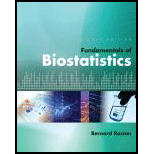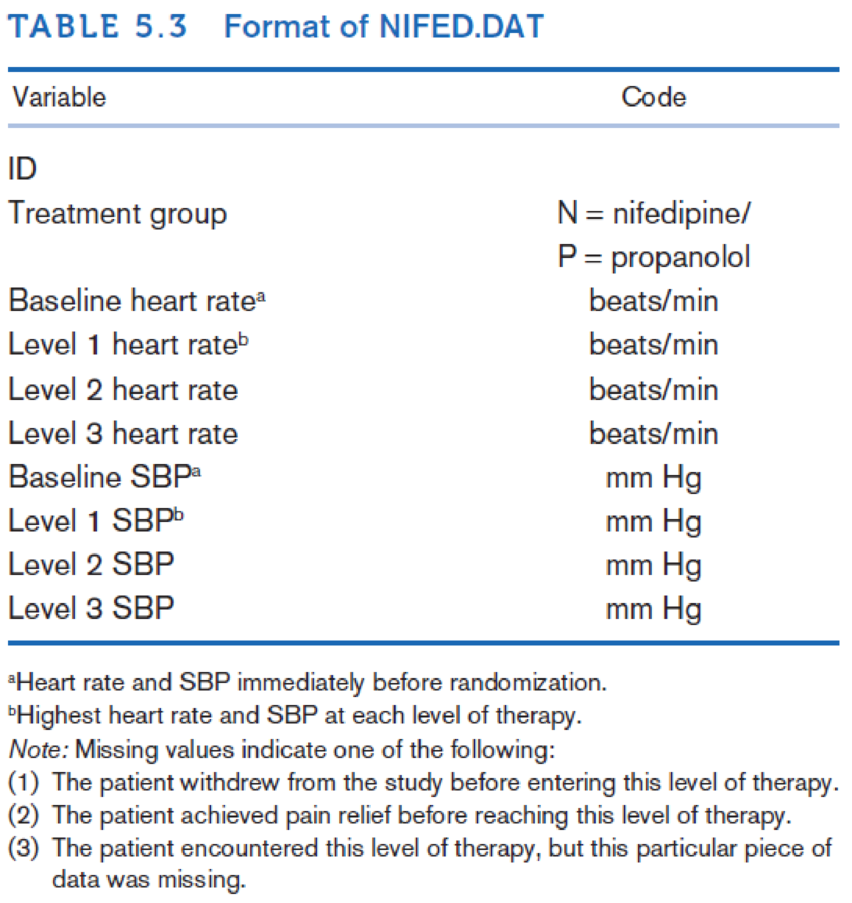
A clinical trial was conducted to test the efficacy of nifedipine, a new drug for reducing chest pain in patients with angina severe enough to require hospitalization. The duration of the study was 14 days in the hospital unless the patient was withdrawn prematurely from therapy, was discharged from the hospital, or died prior to this time. Patients were randomly assigned to either nifedipine or propranolol and were given the same dosage of each drug in identical capsules at level 1 of therapy. If pain did not cease at this level of therapy or if pain recurred after a period of pain cessation, then the patient progressed to level 2, whereby the dosage of each drug was increased according to a pre-specified schedule. Similarly, if pain continued or recurred at level 2, then the patient progressed to level 3, whereby the dosage of the anginal drug was increased again. Patients randomized to either group received nitrates in any amount deemed clinically appropriate to help control pain.
The main objective of the study was to compare the degree of pain relief with nifedipine vs. propranolol. A secondary objective was to better understand the effects of these agents on other physiologic parameters, including heart rate and blood pressure. Data on these latter parameters are given in Data Set NIFED.DAT (at www.cengagebrain.com); the format of this file is shown in Table 5.3

Compare graphically the effects of the treatment regimens on heart rate and blood pressure. Do you notice any difference between treatments?
Want to see the full answer?
Check out a sample textbook solution
Chapter 5 Solutions
Fundamentals of Biostatistics
- Business Discussarrow_forwardThe following data represent total ventilation measured in liters of air per minute per square meter of body area for two independent (and randomly chosen) samples. Analyze these data using the appropriate non-parametric hypothesis testarrow_forwardeach column represents before & after measurements on the same individual. Analyze with the appropriate non-parametric hypothesis test for a paired design.arrow_forward
- Should you be confident in applying your regression equation to estimate the heart rate of a python at 35°C? Why or why not?arrow_forwardGiven your fitted regression line, what would be the residual for snake #5 (10 C)?arrow_forwardCalculate the 95% confidence interval around your estimate of r using Fisher’s z-transformation. In your final answer, make sure to back-transform to the original units.arrow_forward
 Glencoe Algebra 1, Student Edition, 9780079039897...AlgebraISBN:9780079039897Author:CarterPublisher:McGraw Hill
Glencoe Algebra 1, Student Edition, 9780079039897...AlgebraISBN:9780079039897Author:CarterPublisher:McGraw Hill
